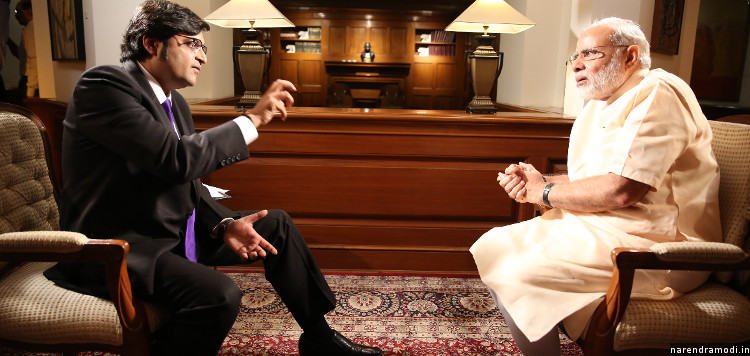Modi Wrong About Odisha Voters, Right About Jan Dhan Yojana

On 27 June 2016, Narendra Modi gave his first television interview, after becoming Prime Minister, to Times Now. We fact-checked some of his statements.
Statement 1: “The Pradhan Mantri Jan Dhan Yojna (PMJDY) is not only about opening bank accounts for the poor. Because of this the poor are feeling that they are becoming a part of the country's economic system. The bank that he was seeing from afar, now he is able to enter that bank. This brings about a psychological transformation. Looked at in another way, did you ever imagine that 40 thousand crores could be injected into the banking system by contributions from the poor.”
This is correct. The latest figure is Rs 39,152 crore, according to official government data.
PMJDY deposits increased nearly eight-fold (790%), from Rs 4,273 crore in September 2014 to Rs 38,048 crore in May 2016, as IndiaSpend reported on the day of the interview, the average deposit per account increasing 118% from Rs 795 in September 2014 to Rs 1,735 in May 2016.
Statement 2: “The Indian voter today is very mature. He votes in one fashion in the Lok Sabha elections, he votes in a different manner in the State Assembly elections. We have seen this. In 2014, the General Elections coincided with the Odisha Assembly elections. The same electorate gave one judgement for Odisha and another judgement for Delhi.”
In response to another follow up question on the same issue, he repeated “Odisha is the best example. Odisha is the best example. In 2014, the BJP had no advantage in the state but the BJP won on the Lok Sabha seats. This shows the difference.”
These statements are not true. The Bharatiya Janata Party (BJP) won one Lok Sabha (Parliament's lower house) seat in 2014, whereas the Biju Janata Dal won 20 of 21--its best performance ever in any parliamentary election--and 117 seats in the state assembly polls the same year, again its best ever.
The BJP won more seats in previous parliamentary elections. It’s best-ever performance was in the 1999 elections, when it won 9 seats.
Source: Election Commission of India
Source: Election Commission og India
Statement 3: “It's estimated an individual spends an average of 7,000 rupees for treatment of a disease. The main reason for disease is filth.”
It is not clear what expenditure Modi was referring to.
The average amount spent for treatment per hospitalised person in the private hospitals was Rs 25,850 and Rs 6,120 in public hospitals, according to a health survey (January to June 2014) conducted by the National Sample Survey Organisation. If Modi was referring to average expenditure per case in public hospitals then he was largely right, but the majority of Indians do not depend on public healthcare.
In rural India, 42% of hospitalised treatment was carried out in public hospitals and 58% in private hospitals. For the urban India, the corresponding figures were 32% and 68%.
The data further reveal that 72% in the rural areas and 79% in the urban areas with relatively minor ailments received medical attention from the private sector, including private doctors, nursing homes, private hospitals and charitable institutions.
The full transcript of the interview is here.
(Saha is a freelance journalist based in New Delhi.)


